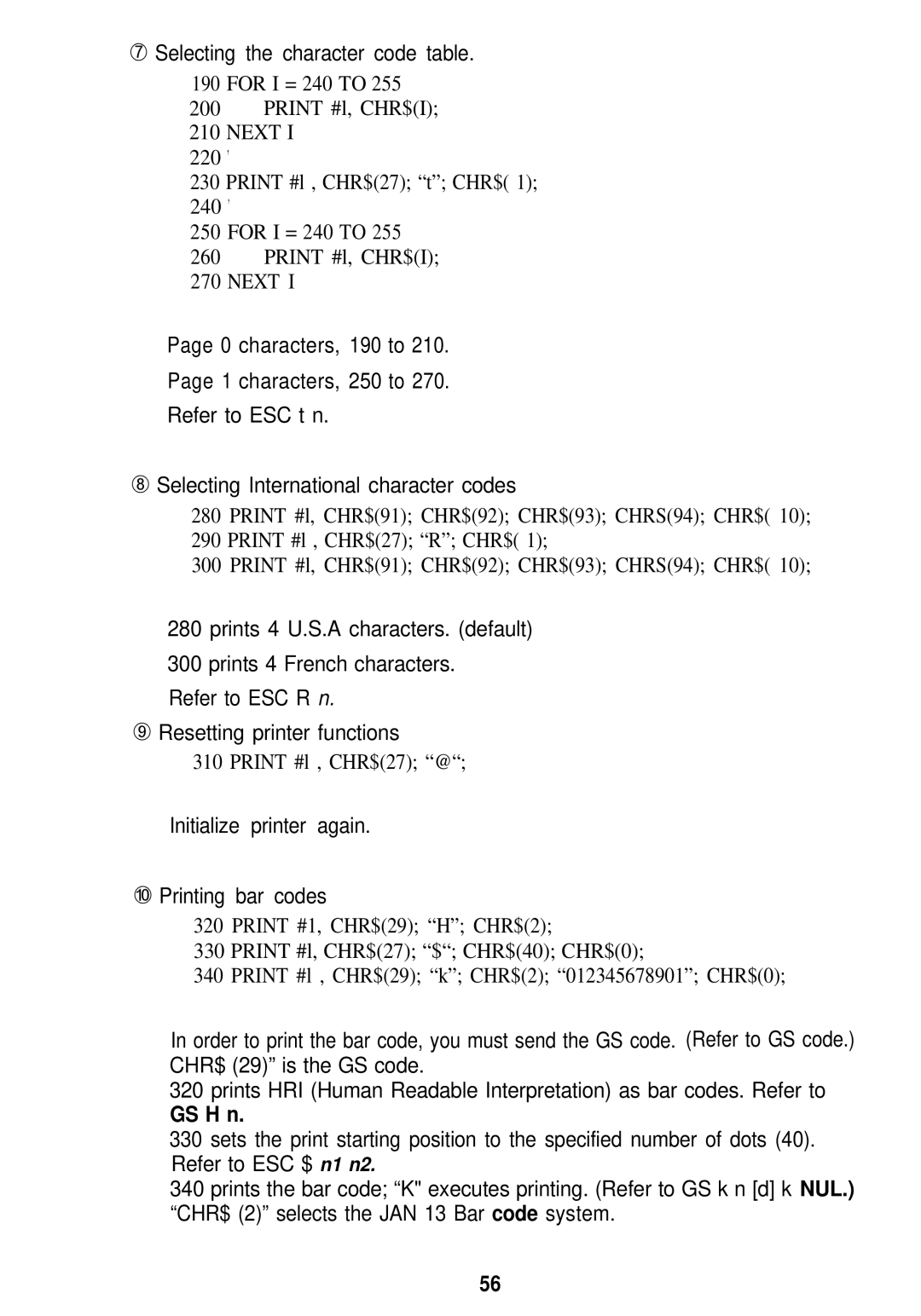ÆSelecting the character code table.
190 FOR I = 240 TO 255
200PRINT #l, CHR$(I);
210NEXT I
220’
230PRINT #l , CHR$(27); “t”; CHR$( 1);
240’
250FOR I = 240 TO 255
260PRINT #l, CHR$(I);
270NEXT I
Page 0 characters, 190 to 210.
Page 1 characters, 250 to 270.
Refer to ESC t n.
ÇSelecting International character codes
280 PRINT #l, CHR$(91); CHR$(92); CHR$(93); CHRS(94); CHR$( 10); 290 PRINT #l , CHR$(27); “R”; CHR$( 1);
300 PRINT #l, CHR$(91); CHR$(92); CHR$(93); CHRS(94); CHR$( 10);
280 prints 4 U.S.A characters. (default)
300 prints 4 French characters. Refer to ESC R n.
ÈResetting printer functions
310 PRINT #l , CHR$(27); “@“;
Initialize printer again.
ÉPrinting bar codes
320 PRINT #1, CHR$(29); “H”; CHR$(2);
330 PRINT #l, CHR$(27); “$“; CHR$(40); CHR$(0);
340 PRINT #l , CHR$(29); “k”; CHR$(2); “012345678901”; CHR$(0);
In order to print the bar code, you must send the GS code. (Refer to GS code.) CHR$ (29)” is the GS code.
320 prints HRI (Human Readable Interpretation) as bar codes. Refer to
GS H n.
330 sets the print starting position to the specified number of dots (40). Refer to ESC $ n1 n2.
340 prints the bar code; “K" executes printing. (Refer to GS k n [d] kNUL.) “CHR$ (2)” selects the JAN 13 Barcode system.
56
